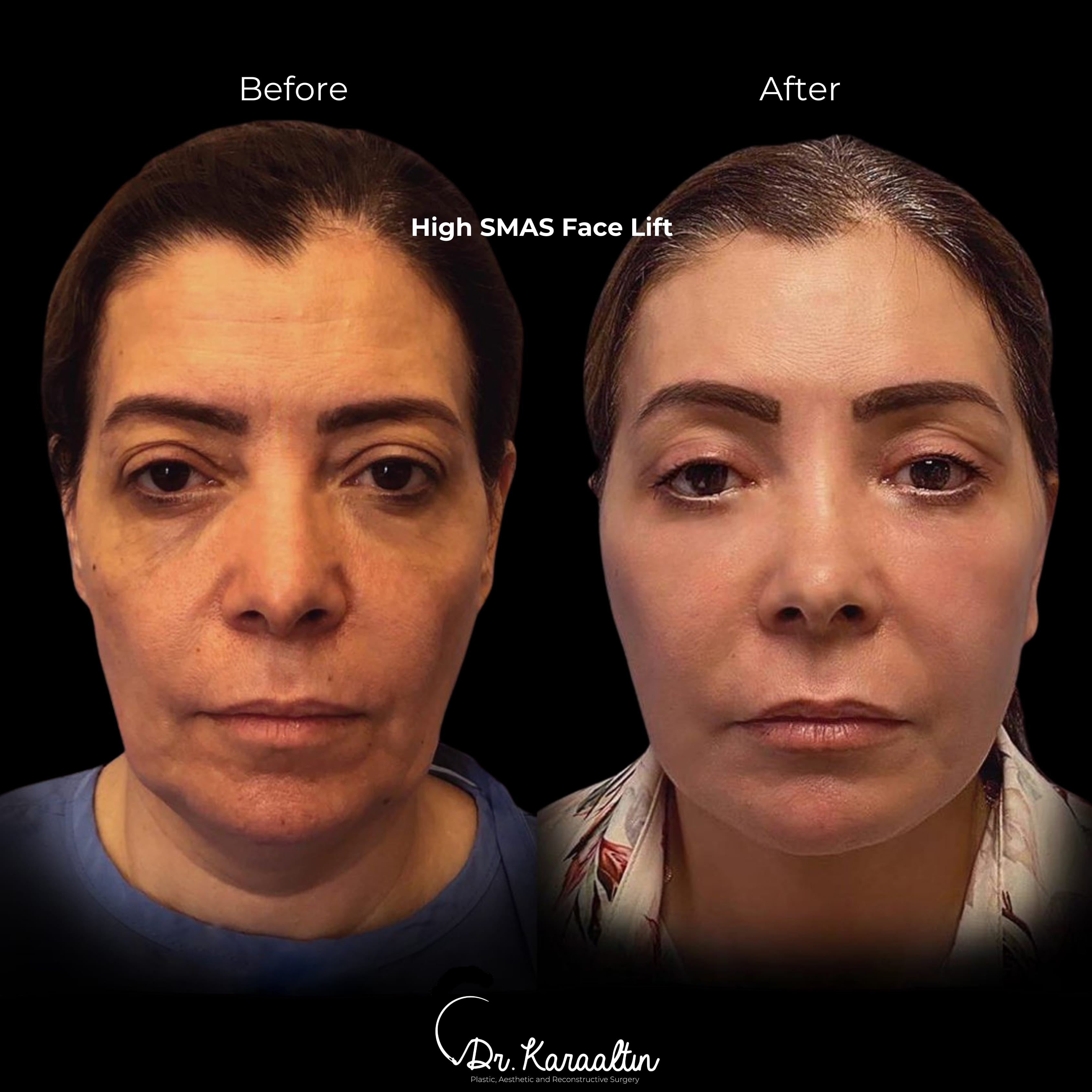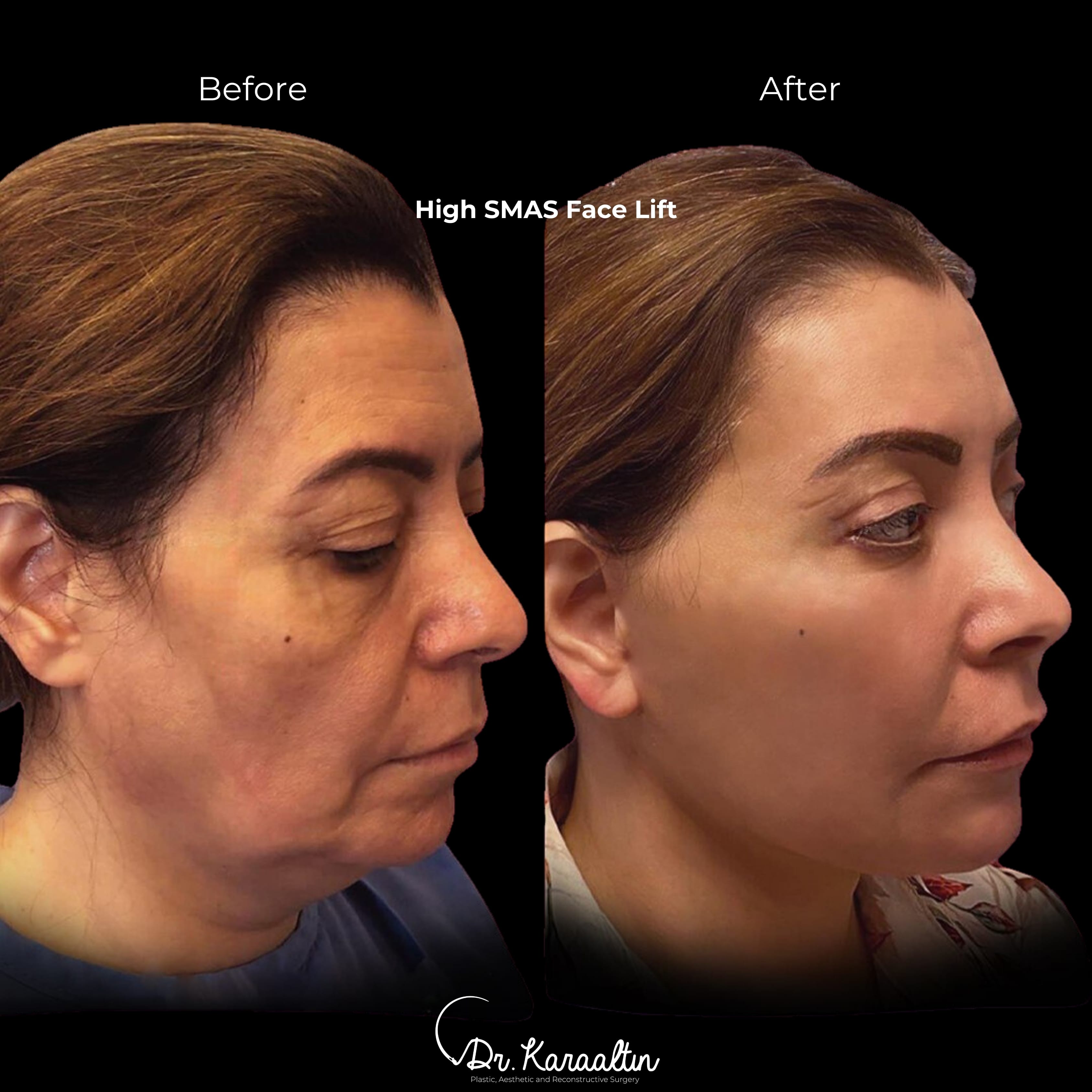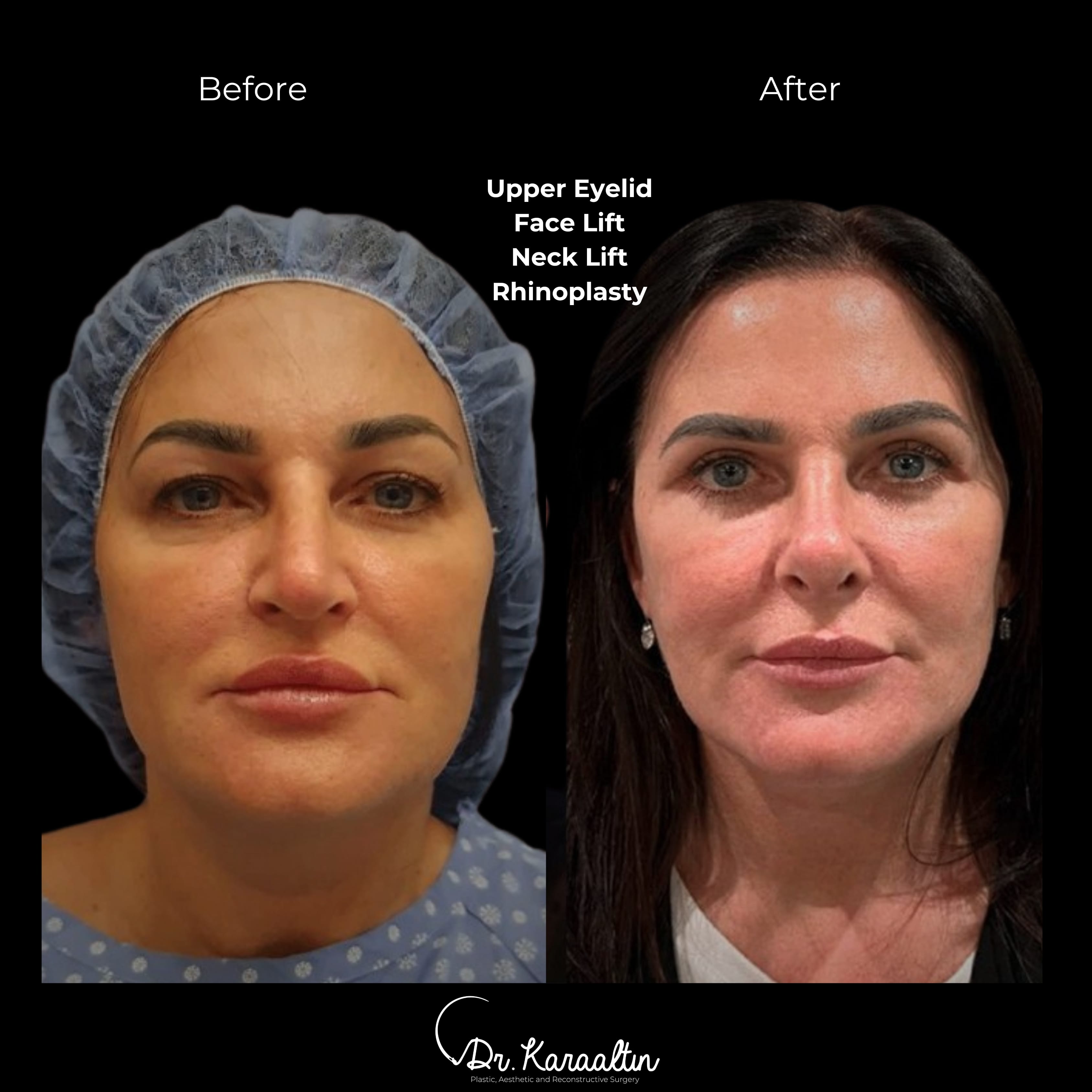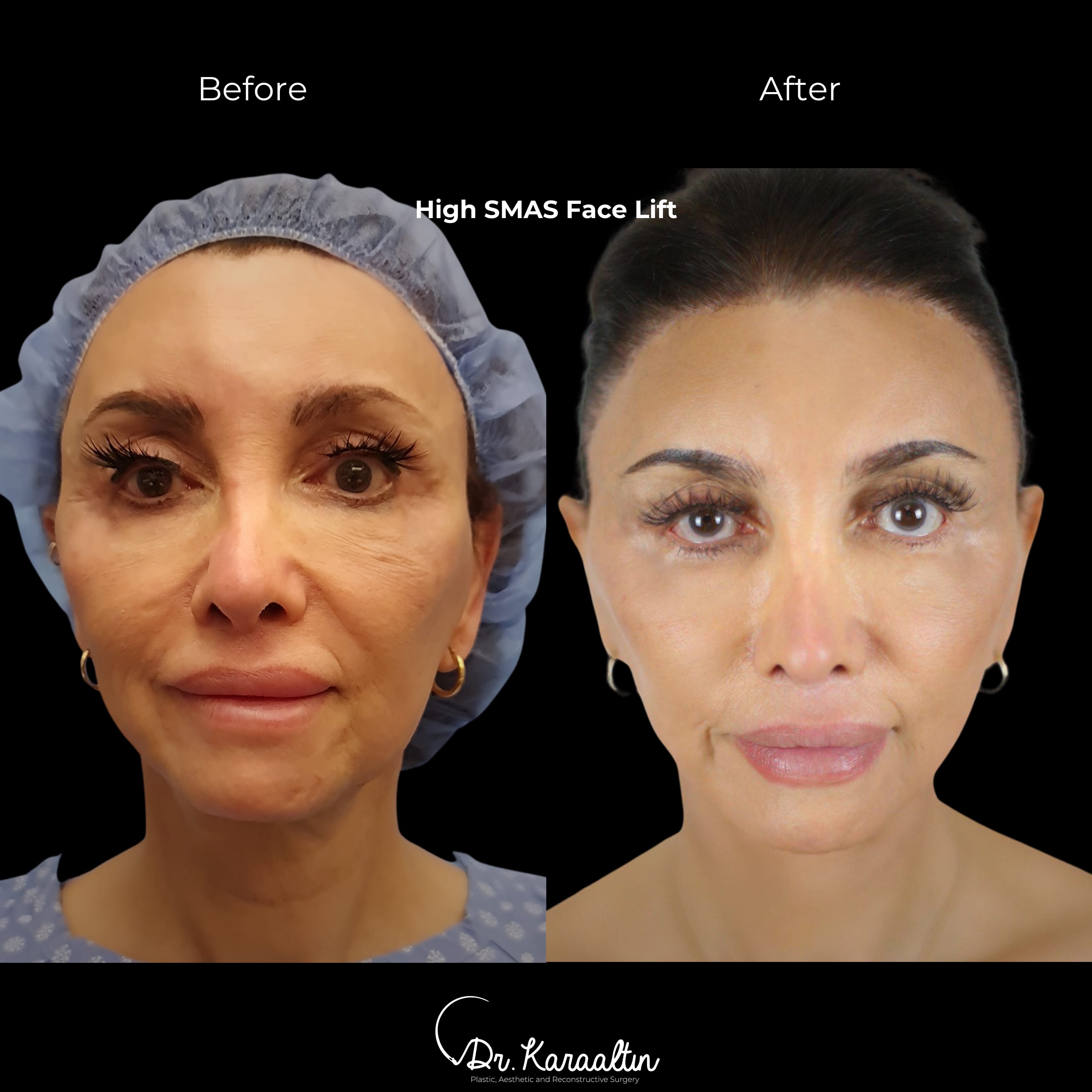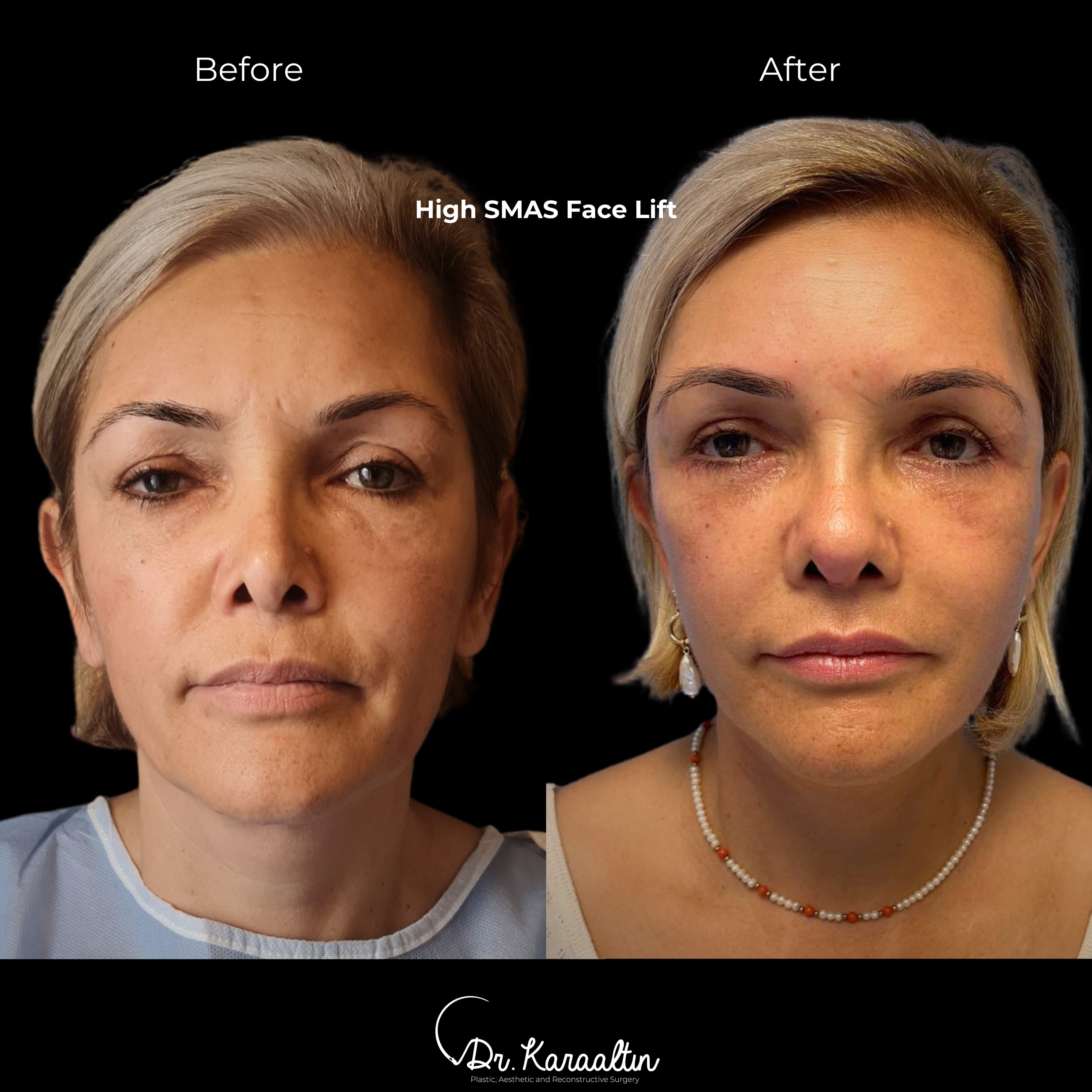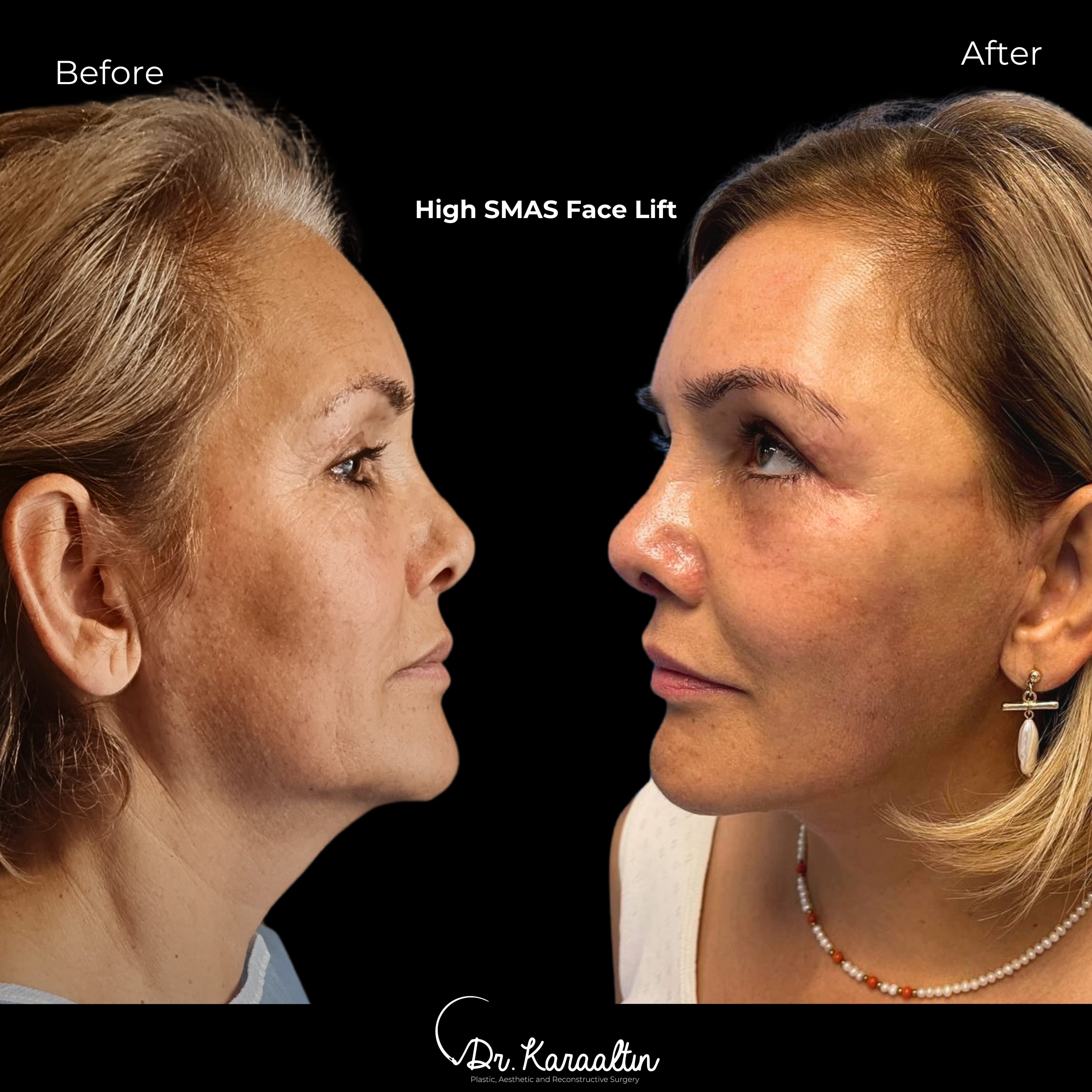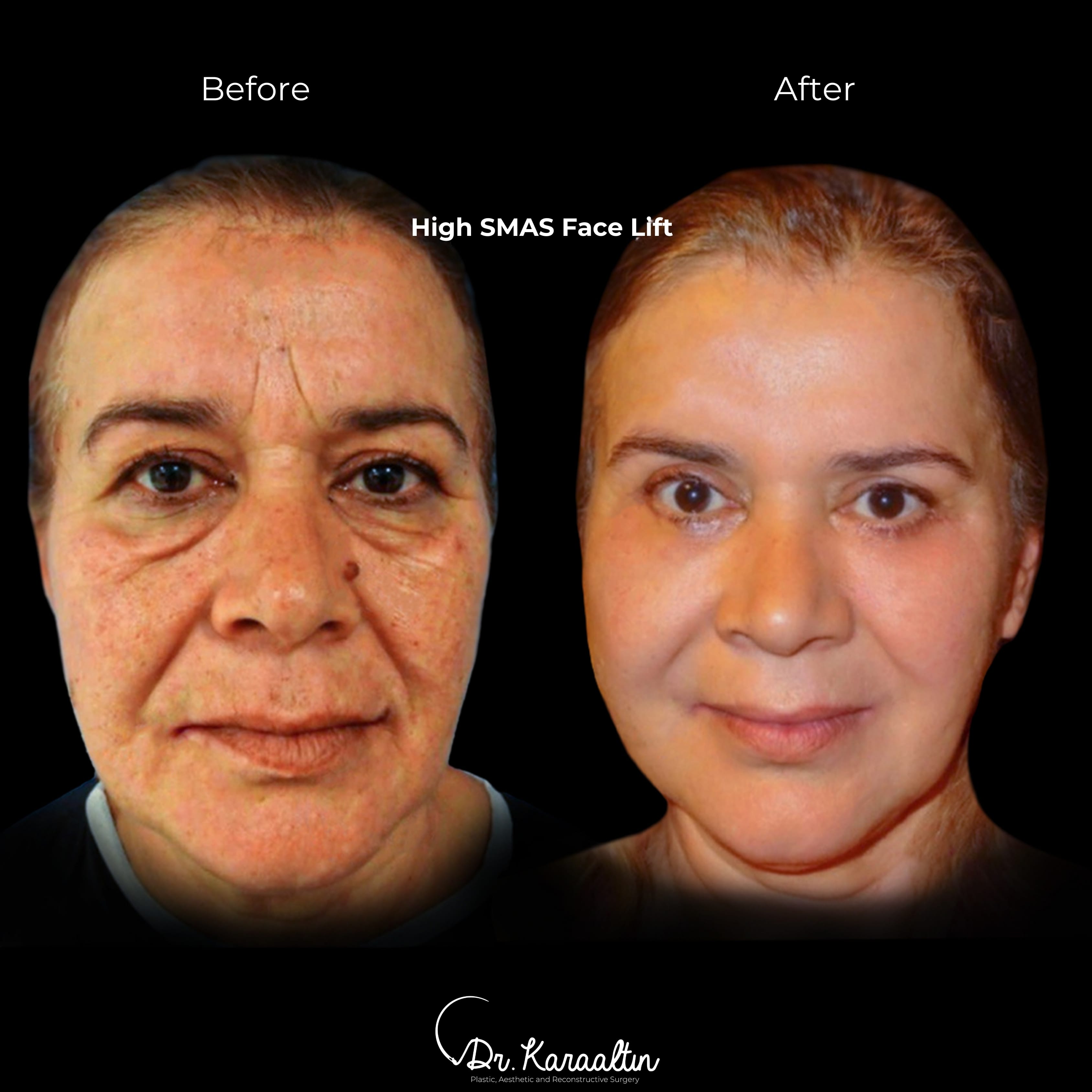
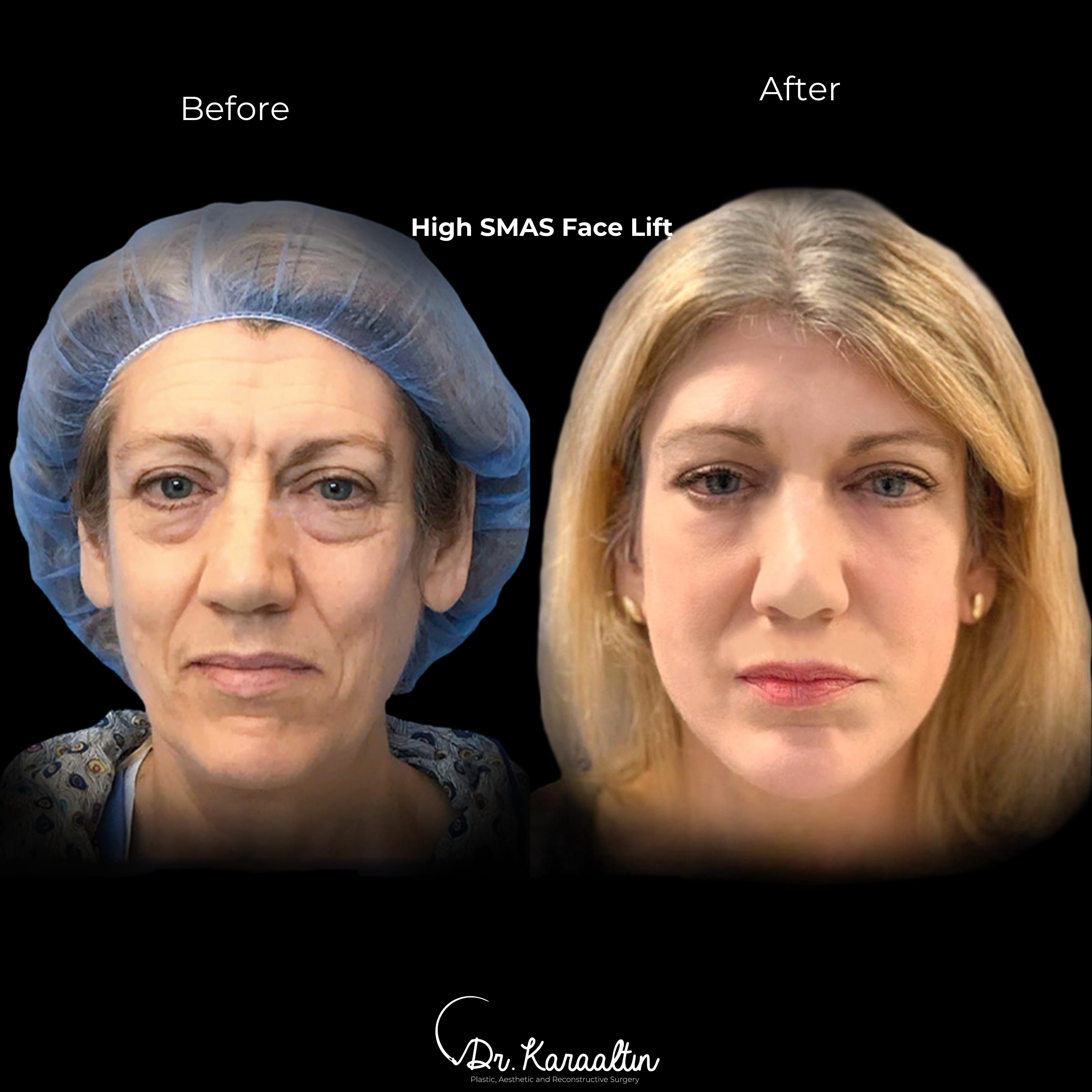
The mini facelift, often referred to as short scar or minimum incision facelift or rhytidectomy, is a facial rejuvenation procedure with limited incisions. It aims to lift and tighten the superficial musculo-aponeurotic system to restore the lower midface and the mandibular contour, thus eliminating undesirable jowls. By performing the deep plane or extended deep plane facelift with short incisions, the midface and upper neck can also be improved without the full face and neck incisions as in the typical rhytidectomy. With its decreased operative time and expense, rapid recovery, less complications, as well as more limited incisions with resultant less evidence of scars, mini facelift techniques have boomed over a decade for younger patients who seek facial rejuvenation. This technique might be suitable for minor aging or younger patients per-se.
Despite the variety of novel facial rejuvenation technologies available today, the reference standard for correction of the senescent jaw line and neck remains rhytidectomy. The purse-string facelift, a vertical facelift that moves away from traditional techniques that use a horizontal vector of subcutaneous muscle-aponeurotic system repositioning. The vertical facelift can counterbalance the effects of gravity and natural facial aging and can reposition the facial soft tissues into a more youthful position more directly and correctly. Rather than multiple, separate sutures to support the suspended tissues, the purse-string technique offers two distinct advantages: operative expediency and a tenacious suture anchor based on the periosteum of the posterolateral zygomatic arch.
subperiosteal deep plane rhytidectomy (SPDPR), which combines a deep plane rhytidectomy with a subperiosteal dissection. Although combining subperiosteal "release" of midfacial anatomy. The procedure as described is used as an isolated procedure for midfacial descent as well as an incorporated technique when completing a "full" rhytidectomy.
The minimal access cranial suspension (MACS) facelift is a minimally invasive face and neck lift that uses the understanding of the changes in facial anatomy as it relates to facial aging. The MACS facelift uses a shorter incision with limited subcutaneous undermining. It achieves a resuspension of the underlying neck and midface soft tissues with the use of looped, purse-string sutures in the superficial musculoaponeurotic system and platysma. These attenuated structures are anchored to the deep temporal fascia. In the properly selected patient, the MACS facelift is an effective technique with high levels of physician and patient satisfaction.
This less invasive facelift technique combines repositioning of the orbital and buccal fat pads (deep fat pads in the face) over the cheeks, hollows under the eyes and smile line areas. It restores a youthful, heart shape face. This technique is also called the Scar Free Face Lift. There are few plastic surgeons who can perform this operation through this approach, without incisions on the face that can potentially be visible utilizing the Endo-vision system to dissect and approach the midfacial structures though the hairline inscions.
This technique entails utilizing endoscopic midface lift procedure with reinforced biodegradable Monoblock suspension implants fixed to the cranial region, providing longevity and durability for suspension.
The face lift technique known as the “high SMAS” procedure was developed in the early 1980s as a variation of the approach described by Tord Skoog. The “high SMAS” face lift technique suspends the cheek mass securely, leaving the skin and subcutaneous mass attached to the SMAS without placing the skin under greater than normal tension.
The aging process concerning the head & neck region confines to multiple factors related to the facial skeleton, overlying soft tissue as well as the enveloping skin.
In fact, facial and neck soft tissue with the overlaying skin is anchored to the underlying skeleton in certain points. With senescence, the skin and soft tissue starts to gradually sag over the anchors creating folds that pronounce the aging expression.
Indeed, in plastic surgery, several techniques have been popularized to correct this problem. Yet, as you can imagine that beyond all the tricks and solutions residing in the less extensive surgical procedures is obvious that achieving a dramatic change and a true reposition of the facial and neck structures is only possible when facial soft tissue & skin is totally released from its anchor points and re-draped to the youth position.
With the Extended High SMAS technique, it is possible to achieve a dramatic facial rejuvenation in the natural limits providing a younger portrait of the patient as if the patient has traveled back in time.
The technique it self-resides in releasing all the anchoring facial points called the “retaining ligaments” thus liberating the facial soft tissue and re-positioning it to the proper level.
The procedure entails to rejuvenate the face, neck, forehead, and eyebrows as well as upper and lower eyelids. This “totality” concept enables to provide a harmonious equilibrium between the structural units of the face & neck with a durable youthful appearance.
Unlike the deep plane or the SMAS—two tried-and-true approaches—the Ponytail Facelift procedure is not a textbook technique that plastic surgeons learn about in residency. Nor is it a new or in any way revolutionary facelift technique. Surgeons have been using “ponytail” as a descriptor for their supposedly specialized (read: less invasive) facelifts for decades. One surgeon currently owns the trademark for the name, but that hasn’t stopped countless others from adopting it for use on their websites and social accounts.
“The procedure itself is not a traditional standard procedure, such as a breast augmentation or liposuction, that all plastic surgeons are familiar with,” “It’s a prominent term that was most likely outlined for ease of marketing, such as the term mommy makeover,” which refers to a nonspecific combination of surgeries intended to restore a woman’s post-baby body. “That does not necessarily mean that the procedure is unreliable or ineffective, but it does mean that one should do some research and choose a provider carefully.”
We should be aware that the term ponytail facelift would mean different things to different surgeons.
“Terms used to describe facelift surgery are not consistent or uniform among providers,”
What one surgeon calls a mini facelift, another might refer to as a partial or a lower facelift, though the intended outcome and the methods of achieving it may be similar or almost identical. (Although when it comes to cosmetic surgery, the term identical doesn’t ever truly apply, because there should never be a one-size-fits-all approach.). “Every patient gets the facelift that they need—and some people need more work than others. So, if a surgeon can deliver a high-quality facelift with shorter incisions and quicker healing time and he wants to call that a mini, go for it.”
In the case of a ponytail lift, the endoscopic surgery is typically performed using small instruments, a tiny camera, and small incisions that are made far away from the area trying to be lifted (usually along the temporal hairline). These small incisions allow the surgeon to lift the underlying connective tissues (technically called the SMAS) but not any skin—this would have to be cut out via another larger incision. Like any surgical procedure, the technique has its benefits and drawbacks. On the positive side, it is less invasive, so scarring is minimal, and the downtime and recovery time is also less than that of a traditional face lift. And, as with any type of facelift surgery, the results are long-lasting. Yet, off course it has limitations, and it is not applicable for all types of facial aging.
“When you do an endoscopic procedure, it’s great that you can have an incision that’s far away from the area that you want to lift,” meaning that you can hide the incision within the hair on the scalp. “But the downside is twofold: One, you can’t remove any excess skin… and secondarily, you run the risk of losing hair.” This is because the incision is typically on or near the scalp and if it heals improperly, could damage the surrounding hair follicles.
Compared to a classic SMAS, traditional face lift, or deep plane facelift, a ponytail lift does not provide complete correction of the saggy neck and jawline. And because “true endoscopic incisions do not allow for skin excision,” a ponytail lift is effective only for those with early signs of aging who don’t have a dramatic loss of skin elasticity—in other words, mild volume loss and fallen cheeks but not lax skin and droopy jowls or full-on facial rejuvenation. That means such procedures are more appropriate for younger patients.
Finally, you should choose the proper procedure with the qualified surgeon thus choose the qualified health provider rather than a FAD


